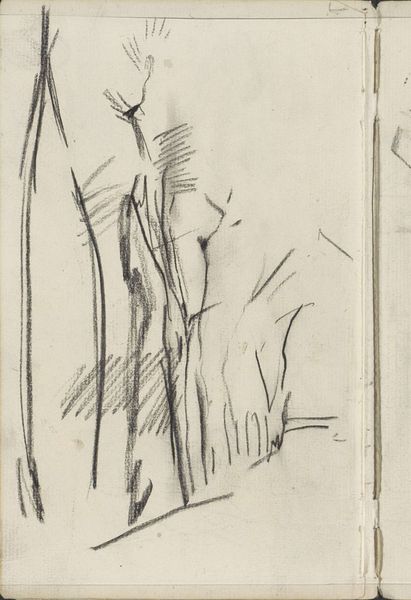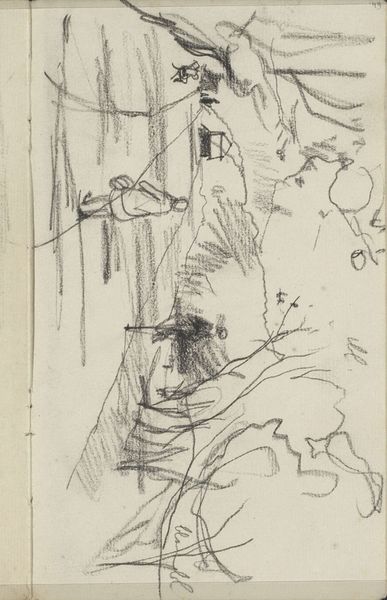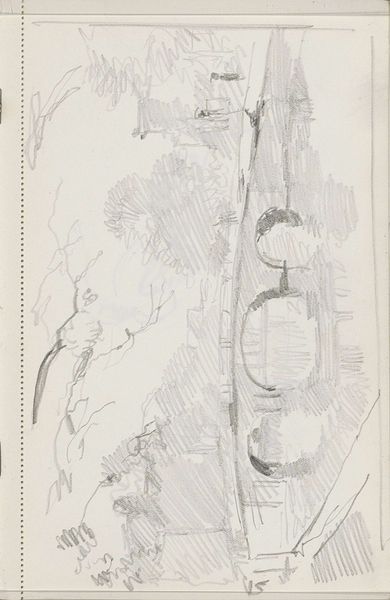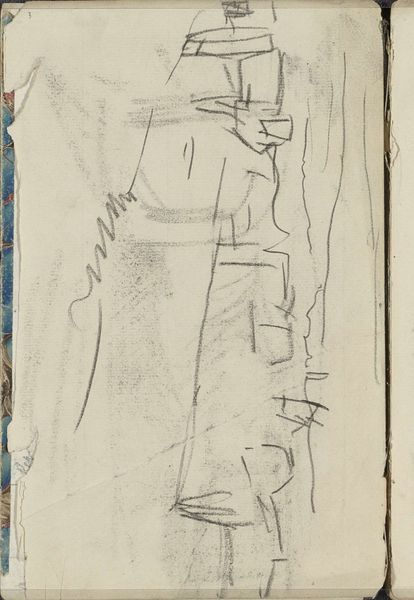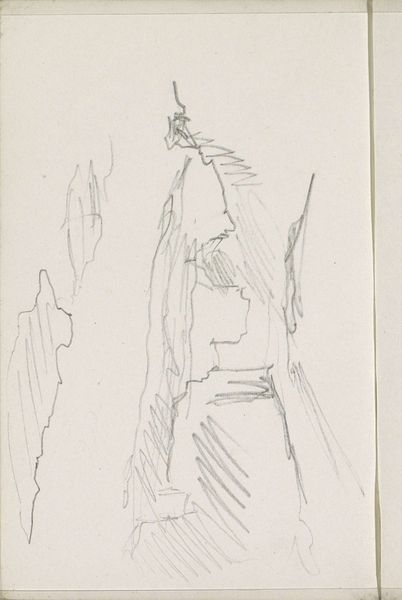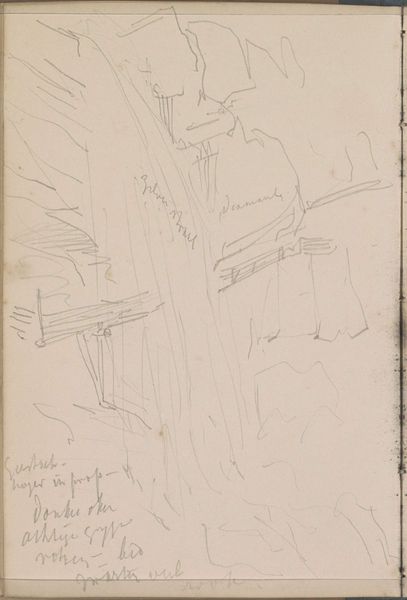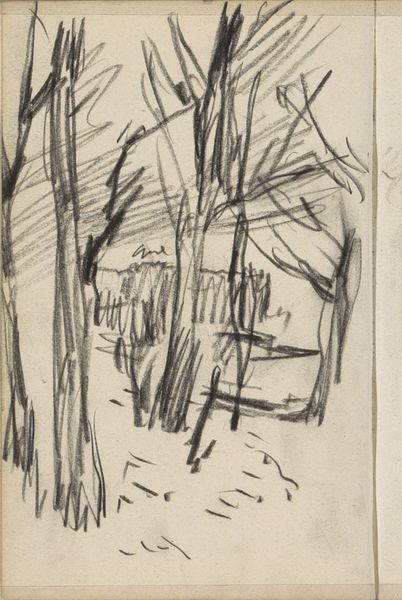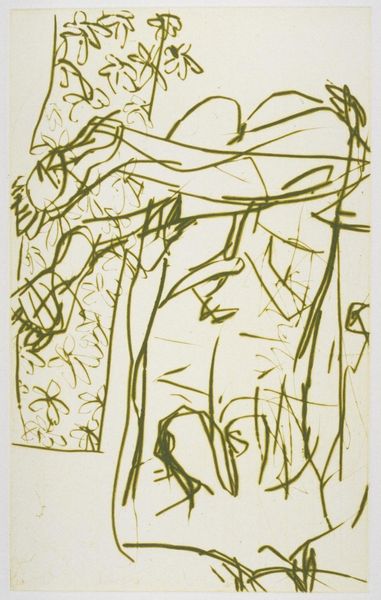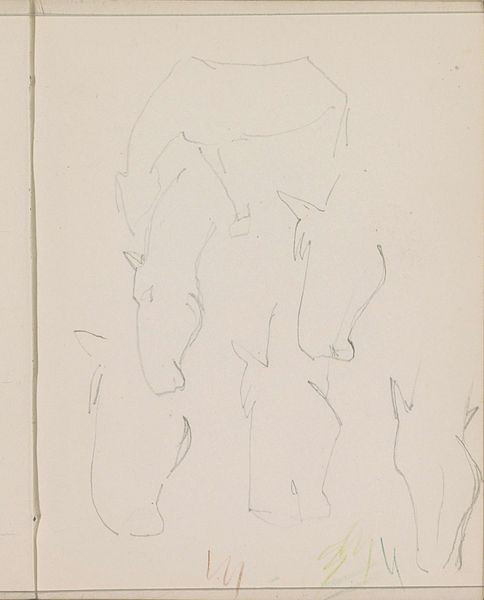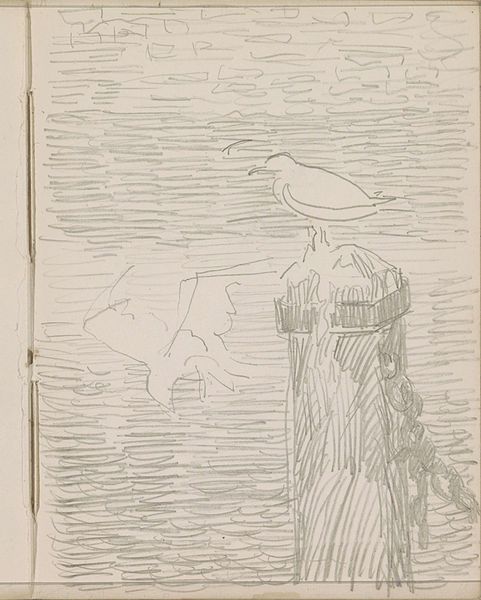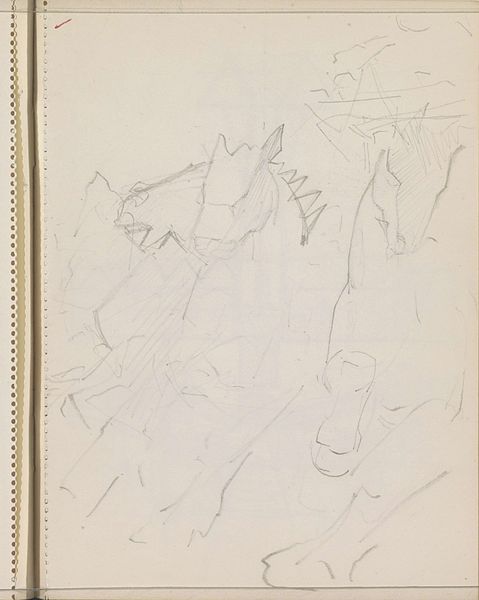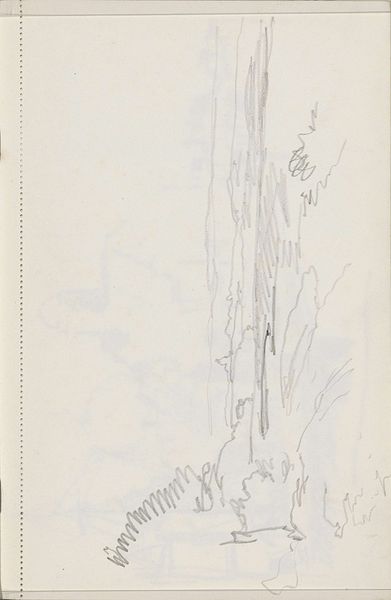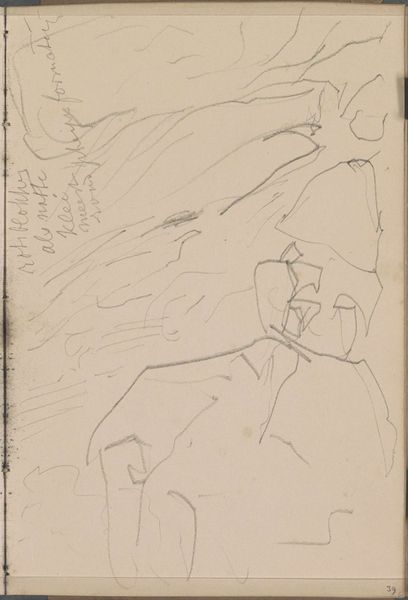
drawing, pencil
#
drawing
#
pen sketch
#
hand drawn type
#
landscape
#
figuration
#
personal sketchbook
#
sketchwork
#
ink drawing experimentation
#
pen-ink sketch
#
pencil
#
pen work
#
sketchbook drawing
#
sketchbook art
#
initial sketch
Copyright: Rijks Museum: Open Domain
Curator: This pen and pencil drawing, whose title translates to "Sitting Man in the Grass Among the Trees", was created around 1916 by Reijer Stolk. Editor: There’s something very tentative and searching about it, almost like a half-remembered dream. The man seems overwhelmed by the vertical strokes all around him. Curator: The location listed is simply 'Rijksmuseum'. To really see it we need to place the image of a figure, seemingly at rest, but rendered with such uncertain lines, alongside the upheaval of World War One, particularly within a neutral country like the Netherlands. How does stillness become a political position, or a form of resistance in the face of such turmoil? Editor: That's a compelling reading. Visually, I'm also drawn to the repeating verticals – the blades of grass, the trees. They almost act as a cage, boxing in this man’s repose. Perhaps it symbolizes societal constraints, or even the man's own psychological barriers. He becomes part of the natural world but not necessarily in harmony with it. The overall image strikes me as rather melancholic. Curator: Indeed. If we explore symbols in similar figure studies across cultures, the recurring motifs of being "grounded," "rooted" and the act of ‘touching grass' as communion, the lack of clear outlines on this man destabilizes him. He’s almost dissolving. Consider, too, how anxieties regarding masculinity shaped art production in this period. What norms of conduct might be under scrutiny here? Editor: Looking again, the more defined upright posts on the right side have a distinct echo to gravestones in a burial ground; given the period context, maybe there's even the suggestion of a battlefield. It seems far removed from the peace usually associated with pastoral scenes. Curator: I agree. Placing "Sitting Man" within those frameworks lets us ask powerful questions about individual versus collective experience during wartime, while disrupting the traditional aesthetic appeal associated with bucolic settings. Editor: The quick sketching creates a fascinating juxtaposition of relaxation and anxiety. A perfect reminder that even quiet contemplation is colored by larger cultural currents. Curator: Ultimately, it reveals how even the seemingly simple act of observation is imbued with intricate networks of power and cultural memory.
Comments
No comments
Be the first to comment and join the conversation on the ultimate creative platform.
